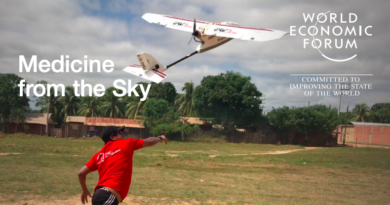How Drones Can Help with Disaster Relief
![]()
The world is always changing and advancing, helping people live safer and happier lives around the globe. The most influential way to change lives is through technology, which has become widespread and easy for most people to access. People benefit when tech adapts to worldwide needs, which makes it a crucial element in disaster relief efforts.
Certain kinds of technology can help people know in advance when a natural disaster will occur. Weather scanners and seismographs monitor the earth’s movement so the people who will be affected can have enough warning to get to safety before a natural disaster strikes. However, those systems aren’t perfect, and sometimes even with warning, natural disasters still leave behind a path of destruction.
Bring in the Drones
Drone technology has been rapidly improving over the last several years, and drones are now advanced enough that they have become an integral part of disaster relief.
There are still those courageous people who jump into dangerous situations to help others in need, but the assistance of drone technology can help save even more lives. Here are a few reasons why.
1. They Assess the Damage
One of the most important steps rescue workers have to do before they’re able to enter a disaster zone and begin to save people is damage assessment. They have to find a balance between saving the people who need help without putting too much risk on their own lives. This means figuring out which areas won’t sink after a landslide, crumble after an earthquake or be flooded as rivers rise.
Drones change the world of damage assessment by flying over areas that have faced destruction. Since they’re easily controlled from a distance, they can hover over places that need a second look and capture images for rescue teams to study. Instead of having rescue workers risk their lives by wading into potentially active disaster zones, drones show teams where they can start working to maximize relief efforts.
2. They Carry Emergency Supplies
Some disasters leave behind so much damage that it’s difficult to remove victims from where they’re stranded or stuck. That means rescue teams must find a way to get them food and water, which is impossible if victims are left in dangerous or precarious situations. CDC guidelines state that every pet and human need a gallon of water per day during a natural disaster, along with additional food.
Even if humans can’t get food and water to natural disaster victims, drones can. They’re able to carry emergency supplies to both individuals and groups of survivors, ensuring victims have what they need to last until rescue crews can get to them. Other supplies drones can carry include life jackets, defibrillators, medicine and other emergency response items.
3. They Fight Wildfires
When wildfires rage, one of the most effective ways to fight them is to send planes over the burning area to drop extinguishing agents over the hottest flames. That method, while effective, gets expensive quickly. Drones step in by providing other methods of fire fighting techniques that give response teams the upper hand when it comes to wildfires.
Drones can carry the extinguishing agents that planes can, even if it has to be in smaller amounts. They can also do what planes can’t. Because they’re smaller and have better maneuverability, they can detect heat sources from survivors and identify potentially flammable or explosive goods. Even after a plane releases the firefighting liquids it contains, firefighters would still be at risk of walking into hot spots and not locating survivors quickly enough without the help of drones.
A Promising Outlook for the Future
Since their development, drones have been able to fill the roles that modern technology wasn’t able to complete. They cross barriers to fight fires and provide emergency supplies that wouldn’t be possible without them. This technology is only improving, too, leading to a future where drones will likely have an even more critical role in responding to natural disasters.
Author Bio:
Emily is a green tech writer who covers topics in renewable energy and sustainable design. You can read more of her work on her blog, Conservation Folks.



